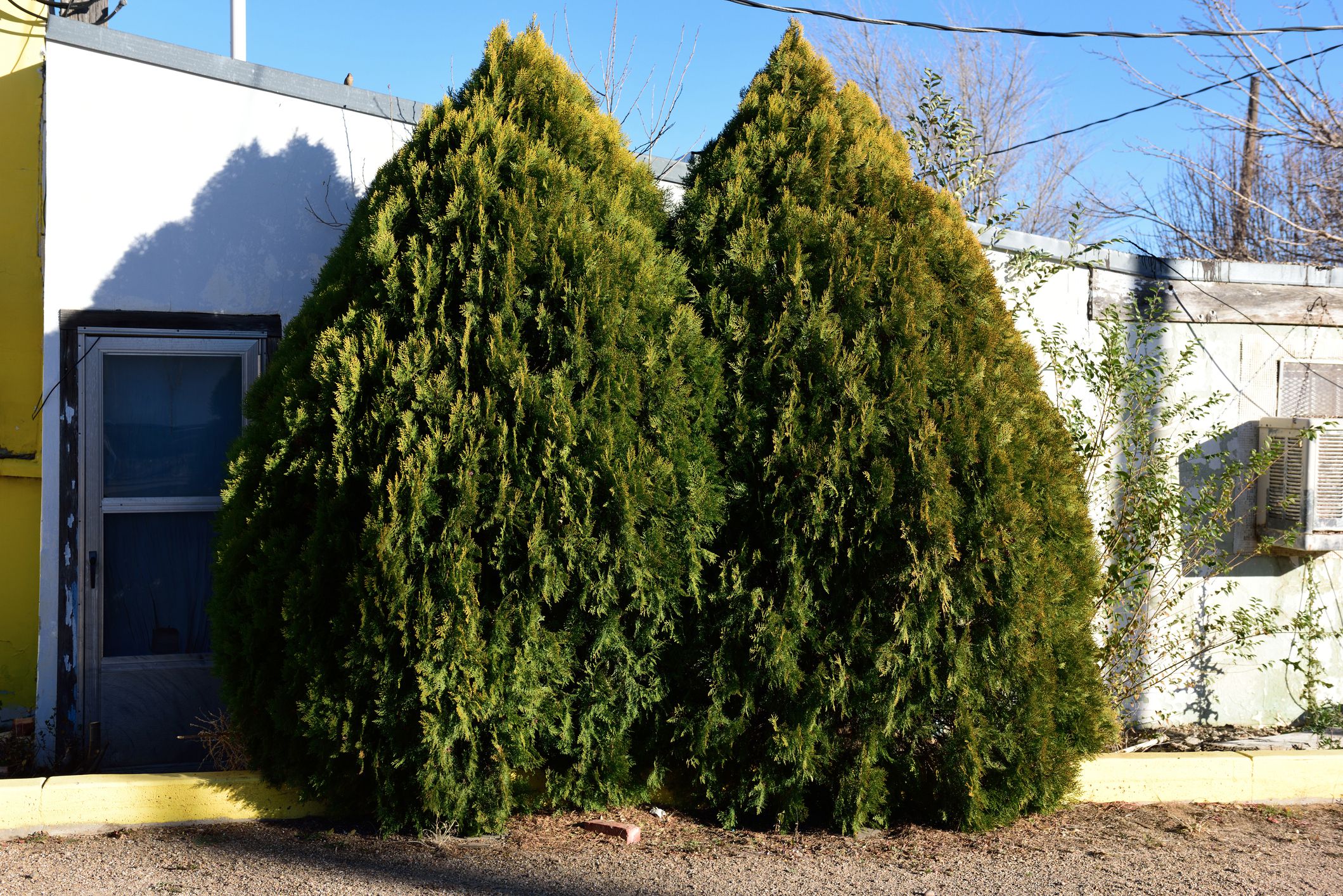The Leyland cypress is a popular ornamental tree known for its fast growth rate and versatility in landscaping. With its graceful form and soft evergreen foliage, this tree adds beauty and privacy to yards year-round.
This guide will provide a complete overview of Leyland cypress trees along with helpful pictures so you can learn to identify and care for these trees
What is a Leyland Cypress Tree?
The Leyland cypress (x Cupressocyparis leylandii) is a fast-growing coniferous evergreen tree that originated as a hybrid between the Monterey cypress and Alaskan cedar.
Some key facts about Leyland cypress trees
-
Conical shape with pendulous, flattened branches. Grows to 60-100 feet tall.
-
Soft, green needle-like leaves turn bronze in winter. Sheds minimal litter.
-
Hardy in USDA zones 6-10. Tolerates a variety of soil conditions.
-
Fast growing at 1-3 feet per year. Reaches maturity in about 10 years.
-
Long lifespan of 50 or more years. Low maintenance once established.
-
Very adaptable and useful for hedges, screens, specimens, accent trees, etc.
Below are pictures of Leyland cypress trees in various garden settings:
![Leyland cypress hedge][]
Leyland cypress as a hedge![Leyland cypress tree][]
Mature Leyland cypress tree![Cypress trees row][]
Leyland cypress as roadside trees
Leyland Cypress Facts and Care Tips
Here are some helpful facts and care recommendations to grow healthy Leyland cypress trees:
- Soil: Grows well in various soils from sand to clay. Well-drained soil is important to avoid root rot.
- Sun: Full sun is required, at least 6 hours per day. Avoid shady locations.
- Water: Keep soil moist but not saturated. Avoid overwatering. Drip irrigation systems work well.
- Fertilizer: Apply a balanced fertilizer in early spring when new growth emerges. Avoid high nitrogen fertilizers.
- Pruning: Can be trimmed as needed to shape hedges or screens. Avoid heavy shearing.
- Pests: Spider mites, bagworms, cypress bark beetles may sometimes be problematic. Good cultural practices help control pests.
- Hardiness: Hardy in zones 6-10. Provide winter protection for young trees in zone 6. Avoid areas with heavy frost and low winter temperatures.
Popular Uses for Leyland Cypress Trees
The versatility and fast growth of Leyland cypress make this species very popular for the following uses:
Hedges and Screens
The dense foliage and Columnar form of Leyland cypress make it an ideal choice for tall privacy screens and boundaries:![Leyland cypress hedge][]
Trimmed frequently, they form dense formal hedges. Allowed to grow naturally, they create tall living fences.
Specimen Trees and Accents
With its pyramidal shape, Leyland cypress make an impressive specimen tree: ![Leyland cypress tree][]
The bold form contrasts nicely with other landscape plants. It also works well to accent focal points like entrances.
Windbreaks and Noise Barriers
Leyland cypress are fast-growing evergreens that make effective windbreaks when planted in rows:![Cypress tree row][]
Their density also helps mute noise from roads or other sources.
Shade and Ornamental Trees
While they thrive in full sun, mature Leyland cypress also cast useful shade. Their soft textured foliage and graceful form make them ideal ornamental trees.
Buying and Planting Leyland Cypress Trees
Leyland cypress are available at most nurseries. Here are some tips for selection and planting:
- Purchase from a reputable nursery to ensure you get the exact species. Avoid big box stores where mislabeling can occur.
- Select healthy trees with good form, without dead spots or damage. Look for robust root balls.
- For hedges, choose similar sized trees so the row grows evenly. Buy multiple trees for wider hedges.
- Prepare planting holes at least twice the width of the root ball. Plant at the same depth as the nursery container.
- Space multiple trees 6-10 feet apart for hedges depending on your desired density. Closer spacing creates a tighter screen.
- Water deeply after planting and apply mulch. Continue regular watering while trees establish.
Maintaining Your Leyland Cypress Trees
Here are some tips for keeping Leyland cypress trees looking their best:
- Water established trees during droughts to prevent decline. The dense foliage has high water requirements.
- Prune as needed to control size and shape. Avoid shearing hedges more than once annually.
- Apply fertilizer early in the growing season for mature specimens showing reduced vigor.
- Monitor for common pests and treat promptly if infestations occur. Preventative measures help reduce pests.
- Remove lower branches as the tree ages to raise the canopy and show off the attractive bark color.
- Safety prune trees growing near structures or power lines to allow adequate clearance.
The Benefits of Leyland Cypress in Landscape Design
With their versatility, easy care, fast growth and year-round appearance, it’s easy to understand the popularity of Leyland cypress trees. They provide excellent value whether used as an accent, hedge, screen or ornamental specimen. With proper selection and care, Leyland cypress trees add striking evergreen structure to gardens and yards.
Which Tree is Right for Me?
You can order standard or semi-dwarf trees, bare-root or potted. When choosing which is best for you, make sure you think about the pros and cons of each.
- Also functions as a shade tree
- Can be planted farther from compatible pollinator
- Fills a larger space
- Easier to harvest fruit
- Bears fruit sooner
- Fits in a smaller space
Leyland Cypress Tree Photos and Images
- The Ultimate Guide to Growing Strawberries in Raised Beds - August 8, 2025
- No-Dig Garden Beds: The Easiest Way to Grow a Beautiful Garden - August 6, 2025
- How to Protect and Preserve Wood for Raised Garden Beds - August 6, 2025

